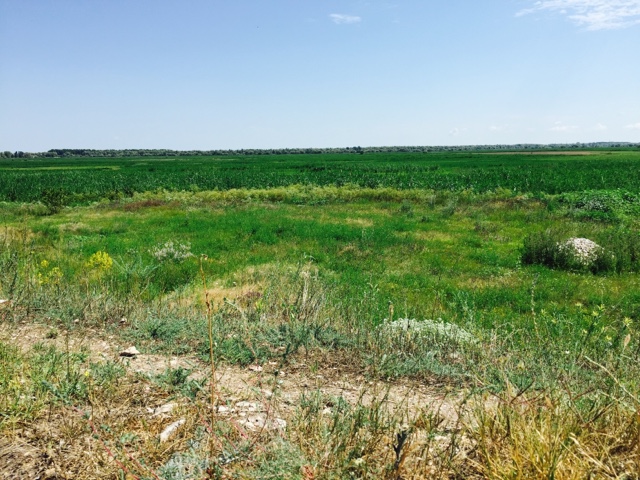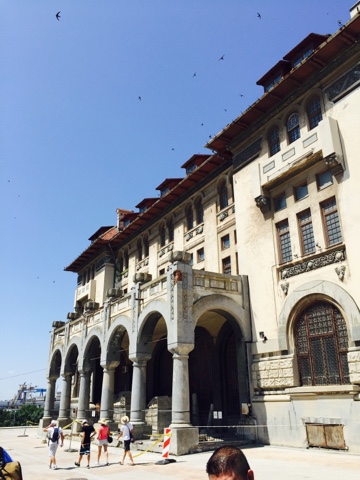Halmyris, A First Glimpse
Today, we had our first look at the trenches, although we didn't do any actual digging. That starts tomorrow! Professor John Cavaros took us around Halmyris and showed us what had already been done and the significance of the finds as well as why we were there.
The corn field is where the Black Sea would have been and up and over to the left (not pictured) where a tree line now exists is where the Danube would have been. Now, they're about 25-30 kilometers away. It's amazing what time can do!
This area is what was presumably a storage building. In the first picture, where the ground rises up above the rocks, is one area we will be excavating more of this month.
Also in Halmyris is a Basilica that contained the remains of two Christian martyrs, among the first to bring the news of Jesus to this area. They succeeded in converting thousands of people to Christianity and were eventually killed for it. Their crypt is beneath the thatch presented here, and is desperate need of preservation, as the frescoes that were more brilliantly on display at the time (painted there to respect the martyrs) are now fading. Unfortunately, the church and its politics in Romania will not allow the preservation of the crypt. Politics, of course. Now, on July 8 of every year, there's a festival in their honor where hundreds of local people take a pilgrimage to a monastery just atop a nearby hill to celebrate them. I'm lucky to see some of that on Wednesday!
This is a partial reconstruction of the Western Gate, the most heavily fortified of the fort. It shows the quintessential Roman aspects of a Roman fort, including the HUGE walls, thick both horizontally and vertically. It's amazing.
Halmyris was a port city, as it was situated on the Danube River and the Black Sea in what is now Romania. The Romans conquered the area, and built the fort here to protect their newly acquired lands from outside invaders. Because the fort was destroyed over the years and rebuilt upon, it has three layers, called phases. Eventually, it was finally abandoned as a functional fort due to the distance the sea and the river had receded from the original shoreline. Now, we only have what's left, ready to be discovered.
It was the most important in the region, next to another fort a few kilometers from here, but it's clear that Halmyris was definitely essential.
Overall, today was mostly educational, as you need to know why and what you're doing before you continue in something so important that so many people have dedicated a lot of time to. Tomorrow, I get my hands in part of the real archaeological excavation, and I couldn't be more excited.






Comments
Post a Comment